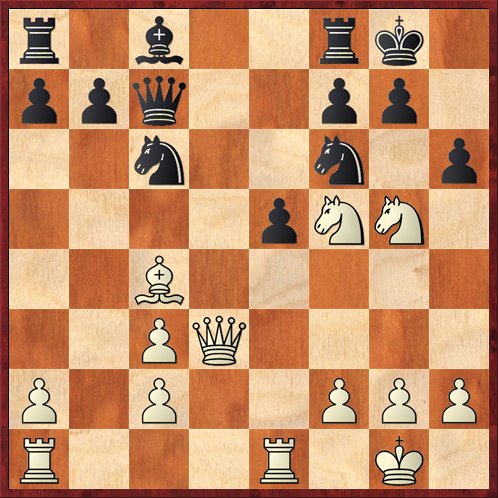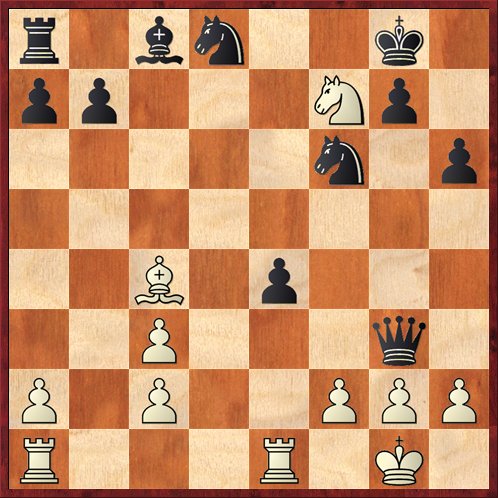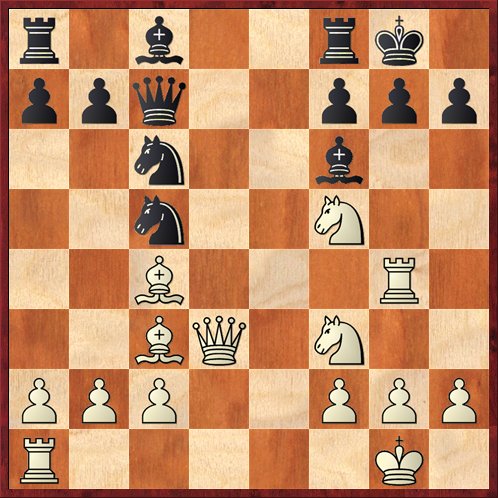Yesterday I got together with two old friends and one new one for some chess at Barnes and Noble in San Jose. The “old friends” were Gjon Feinstein and Cailen Melville, and the “new friend” was Uyanga Byambaa, a student from Mongolia whom Gjon and I met at the Varuzhan Akobian master class in Berkeley last month. It turns out that Cailen had also met her when playing at the Mechanics Institute in San Francisco. He volunteered to drive from Santa Cruz to San Francisco (2 hours), pick her up and drive back to San Jose (1 hour) so that we could get together for a chess foursome.
This may sound like a crazy plan, but it actually worked!
Uyanga showed us a couple of her recent games from the Mechanics Institute. She recently finished playing in the Summer Tuesday Night Marathon, where she had an outstanding result. Going in with a rating of only 2050, she tied for second place with a score of 6-2. Not only that, she had a completely winning endgame in the last round against Robin Cunningham (2274), but only drew. If she had won that game she would have tied for first with Sevan Buscara (2516). Quite an impressive result for an Expert!
I truly think that the sky is the limit for Uyanga. She has such a great sense already for the initiative and for where her pieces ought to be. Her weaknesses are that she doesn’t know the openings that well yet, and her play is perhaps a little bit too predictable. (It’s always “Attack! Full speed ahead!”) But the gaps in her knowledge can easily be filled in with study.
As usual when we have four people, we played some doubles or team chess. Lately we’ve been playing a variation where one person on the team plays five moves, and then the other plays five moves. This seems to lead so somewhat higher-quality games than when the two players alternate moves.
However, quality is a relative term in blitz chess. Here are some positions from a game that Gjon and I won against Cailen and Uyanga, which we thought was the best game of the afternoon, up until I missed an completely obvious win. However, when I put it on Rybka this morning, the computer found all sorts of errors. I would say, though, that Gjon’s errors were a little less obvious and more instructive than mine.
I’ll show you some key positions in quiz format, because I want to keep up the pretense that this blog is actually good for teaching somebody something. 😎
Black to move.
(1) This is the kind of position I love, with pieces hanging all over the place. I have just played 15. Nf5, attacking the bishop on e7. Where should Black put the bishop?
White to move.
(2) Black chose 15. … Bb4. I’m not saying whether that was right or wrong. Now how should White reply?
White to move.
(3) Uyanga has just played 18. … h6??, which should have been the losing move. (A more prudent choice would have been 18. … Bxf5, after which Rybka assesses the position as roughly equal.) Black’s move is like waving a red flag in front of a bull: she is inviting White to sacrifice a knight. Which knight?
White to move.
(4) Black has just played 22. … Qxg3. Which discovered check should White play?
Now it’s time for some answers.
(1) This was a position we discussed at some length after the game. The other possibility that we looked at was 15. … Bf6, with the idea of 16. Bc3 Nc5, attacking both the queen and the knight on f5. However, this isn’t so great for Black because White plays 17. Qd6! The knight isn’t hanging after all, because Black’s queen is under attack. And after 17. … Qxd6 18. Nxd6 White has a dominating position, which Rybka evaluates at +1 pawn.
Remarkably, the move that Rybka likes here is one that none of us even considered: 15. … Bd8! The point of this cagy retreat is that Black’s queen is now defended! So after 16. Bc3 Nc5 17. Qd6 Black can go ahead and play 17. … Bxf5. It’s true that White wins back the material with 18. Qxc5, but it’s a complicated position with only a slight edge for White, according to the computer.
This is one reason why blitz chess is never as satisfying to me as “real” chess. You just don’t have the time to work through a position and realize that a move that wasn’t even on your original list of candidate moves is actually best.
By the way, another interesting line comes after 15. … Bf6 16. Bc3 e4!? with the idea of deflecting White’s queen off the d-file. Rybka comes up with the remarkable idea of 17. Rxe4!! (seemingly walking into a nasty knight fork) 17. … Nc5 18. Rg4!! (sacrificing the queen!). This position deserves a diagram:
If Black takes the queen with 18. … Nxd3, White wins with 19. Bxf6! You might want to see if you can work this out to mate or win of material. Remember, White is down a whole queen for a bishop, so Black can afford to give back a lot of material to try to escape the mating net.
Moving on to the next position:
(2) This is another one that greatly surprised me when I went over the game with Rybka. During the game, as Gjon was thinking over his move, I was mentally saying, “Please play 16. Ng5! Please play 16. Ng5!” So I was delighted when he did. But it’s the wrong move! Rybka considers 16. c3 (which I had evaluated as unclear at best) to be the best for White!
One point is that after 16. c3 ed 17. cb Nde5 White has the surprising 18. Nh6+! Or if 17. … Nf6 (as in the game) White can play 18. N3xd4 with a small advantage. The key thing to realize is that 16. Ng5 is much less effective than it seems at first glance. After 16. … Nf6, the move that Uyenga played, White has a hard time keeping the attack going. He has to deal with the problem of the bishop on d4, and after 17. Bc3 (which Gjon played) Bxc3 18. bc Bxf5 (the move Uyenga should have played but didn’t) 19. Qxf5 Black has succeeded in simplifying the position and finishing her development. As I mentioned earlier, Rybka considers this position to be dead equal or even trending a little bit towards Black. Once you realize this, then 16. c3 starts looking better and better.
Once again, this is a great example of a position that’s next to impossible to play correctly in speed chess. In speed chess, you always go for the showy, aggressive move, 16. Ng5. But in a longer game, you would have time to reflect on the position after 16. Ng5 Nf6!, realize that it actually isn’t so hot for White, and make a calmer move like 16. c3. Very instructive.
(3) Once again, Rybka finds a jaw-dropper here. Although to be honest, this is not a “computer move” — this is something that Gjon absolutely should have seen and didn’t. But it’s not just him! I overlooked it, too! 19. Nxh6+! is absolutely lights out. If 19. … gh 20. Qg6+ forces mate.
This is a super-important tactical theme: the queen check on g6 (or for Black, on g3) when the pawn at f7 (resp. f2) is pinned. Every chess player should have this engraved in their memory. And yet somehow it still manages to catch me by surprise. I don’t know why.
(By the way, Gjon showed the game to Mike Splane, and he saw it right away. So Mike, you don’t have to tell us what idiots we were. We already know!)
I think that Gjon and I were both so focused on the sac on f7 that we just forgot about the sac on h6. This is another interesting psychological error, the error of tunnel vision. You can’t let your lust to play a certain move blind you to even better ones.
Now it’s not that 19. Nxf7 is a bad move. Black is still lost. But the way to think about this position is to remember a famous line from The Wizard of Oz: “Is she merely dead, or is she really most sincerely dead?” To succeed in chess, you’ve got to play the moves that make your opponent really most sincerely dead. Because when chess players are merely dead, they have a nasty way of coming back to life. Which is exactly what happened in this game.
(4) OF COURSE, the correct discovered check is 23. Nxd8. White ends up a whole rook ahead, and has no difficulty rescuing the knight on d8. Instead, I played 23. Nxh6+?? Again, I think it was tunnel vision, plus a little bit of time trouble. This is just kindergarten stuff. Obviously, it’s better to win a knight than to lose a knight. ‘Nuff said.
After my dreadful blunder 23. Nxh6+?? Kh7 24. hg gh it is once again anybody’s game. After 25. f3 (which I played) Rybka gives White a tiny advantage. Unfortunately for Cailen and Uyenga, they were in worse time trouble than we were, and Uyenga ran out of time on move 29.
What a game! But not exactly in the way that I thought.







